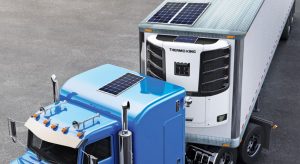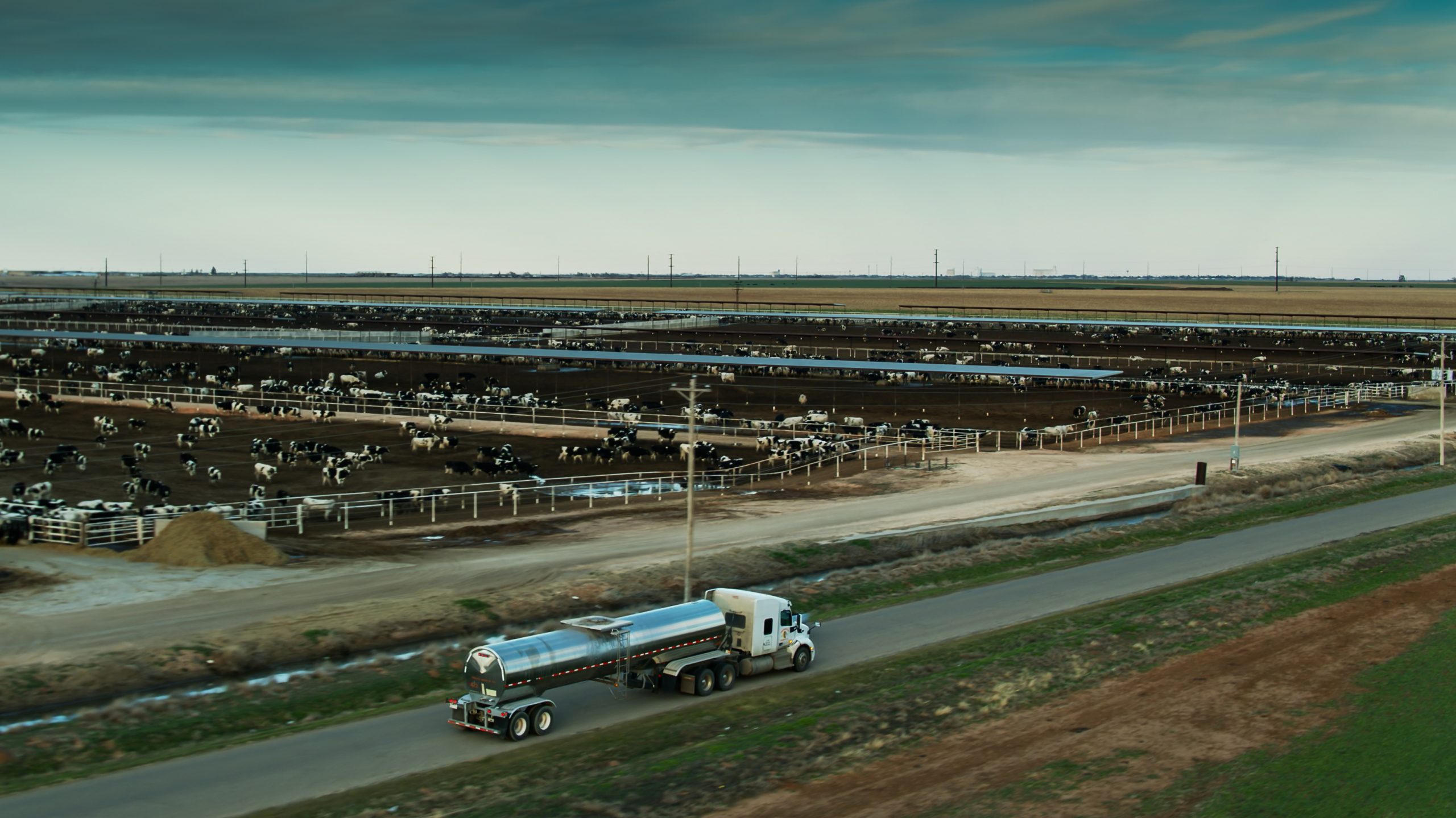Milk transporters face myriad challenges for efficient transportation of milk and other dairy products

A key issue for processors and their customers is creating transportation schedules that enable workers to immediately unload products when vehicles arrive at their destinations, analysts say.
When it comes to the efficient transportation of milk and other dairy products, time is tight. Dairy processors must move selections in the most effective manner if they are to minimize operational expenses while maintaining food integrity and safety. While evolving refrigeration and temperature monitoring technologies are helping to enhance performance, operators still face such major challenges as driver shortages and congestion at loading docks and on highways.
A key issue for processors and their customers is creating transportation schedules that enable workers to immediately unload products when vehicles arrive at their destinations, analysts say. The objective is to avoid the bottlenecks that often occur when many vans and trucks arrive simultaneously at loading docks, which can create long wait times that drive up labor and energy costs.
Jim Wisner, president of Wisner Marketing. He notes that crowding at loading docks is a “serious problem” throughout the dairy industry, and careful planning is crucial to prevent vehicles from queuing.
“That is where things break down,” said Jim Wisner, president of Wisner Marketing, a Gurnee, Ill.-based market research, education and consumer-packaged-goods consulting firm. He notes that crowding at loading docks is a “serious problem” throughout the dairy industry, and careful planning is crucial to prevent vehicles from queuing.
“Operators are paying for the driver and the cost of keeping the engine and the refrigeration units running,” Wisner said. “It is a complex situation tomanage, so it is not surprising that there are difficulties. But there also are more problems with it than there should be.”
Enjoying our insights?
Subscribe to our newsletter to keep up with the latest industry trends and developments.
Stay Informed

Indeed, having a plethora of trucks and vans appear together can result in vehicles sitting for several hours before receiving attention, Kevin Parnell, senior vice president of sales for PTG Logistics
Indeed, having a plethora of trucks and vans appear together can result in vehicles sitting for several hours before receiving attention, said Kevin Parnell, senior vice president of sales for PTG Logistics, a Mason, Ohio-based third-party logistics and supply chain management organization.
But with federal guidelines governing the hours a driver can work each day, it is important that companies minimize the down times, he said.
“More shippers and receivers are increasingly working with trucking companies to keep things moving,” he said. “It is crucial that the load is ready to go when a truck arrives at a plant for pickup, and workers are ready to offload vehicles upon delivery.”
The ideal situation, Parnell said, is having two drivers operate a truck for 20 to 22 hours each day.
“The more you can use the resources in a productive manner, the greater the efficiencies and cost-effective you can be,” he said.
Perhaps the largest obstacle to maintaining an efficient dairy transport system, however, is having the requisite number of drivers, analysts say.
A demand for drivers
Perhaps the largest obstacle to maintaining an efficient dairy transport system, however, is having the requisite number of drivers, analysts say. Wisner noted that many drivers are in their late 50s and it is difficult for the industry to attract and train younger persons.
“It is resulting in a big shortage of trucks and workers and resulting in higher salaries,” he says.
Parnell concurs.
“There are more commerce and goods moving across the U.S. in trucks than ever before,” he said. “The number of drivers that are needed continues to increase, while the number of available drivers to fill those jobs continues to decrease. That drives the wages and transportation costs significantly higher, as it is more expensive to hire good, dependable and seasoned veteran drivers.”
To help reduce such problems, processors can contract with third-party operators to handle their transportation requirements rather than maintaining their own fleet of vehicles and drivers, Wisner said. Third parties can be particularly effective when there are wide variances in the number of products that companies must transport each day, which can result in many vehicles sitting idle during non-peak periods, he said.
It is critical for dairy processors to consistently monitor the temperatures inside refrigeration units to maintain product integrity and enhance food safety, he added.
“Ensuring proper refrigeration at all times is quite literally a matter of life and death,” said Ted Combs, industry principal at OSIsoft PI System, a San Leandro, Calif.-based real-time data-management application provider enabling operational intelligence.
Keep taking the temperature

Among the evolving monitoring technologies are sensors that enable processors to gauge the temperature within vehicles and that automatically trigger adjustments…
Processors typically use temperature-controlled refrigeration units, also known as reefers, to transport dairy selections. Such vehicles include vans, small trucks, semi-trailers and intermodal containers, which are designed to support products with a short shelf life. The refrigeration units also typically have electric power sources that allow cold air to continuously flow out of the bottom of the reefer and circulate to the top and back down.
Among the evolving monitoring technologies are sensors that enable processors to gauge the temperature within vehicles and that automatically trigger adjustments — for example, shutting down a refrigeration system if the product space becomes too cold. Other elements include data loggers that oversee cargo temperatures and set off an alarm if a problem occurs, tracking devices that monitor refrigerated freight with GPS technology in real-time, and bar code tracking of inventory that records each individual item in a shipment.
Drivers can typically set the refrigeration temperatures from the vehicle’s cab using digital controls and are able to store the readings in databases, said Stephen Mullin, vice president of marketing for Bush Refrigerated Vans, a Cincinnati, Ohio-based provider of new and used refrigerated trucks and vans. He said maintaining such information is vital for operators seeking to comply with regulations under the Food Safety Modernization Act.
Maintain a refrigerated focus

The use of blockchain technologies to monitor and transmit vehicle refrigeration temperatures in real time, meanwhile, will likely become increasingly prevalent in the dairy sector, Wisner said.
The use of blockchain technologies to monitor and transmit vehicle refrigeration temperatures in real time, meanwhile, will likely become increasingly prevalent in the dairy sector, Wisner said. Such technologies will better enable parties to determine who is at fault — the processor, supplier or third-party distribution company — and if product quality is compromised because of faulty temperature controls, he notes.
Parnell adds that products and vehicles also should have an electronic time stamp that indicates the time a truck was loaded, the vehicle’s refrigeration temperature during a trip, and the time and temperature during unloading.
To further sustain product quality, it is crucial that operators use the appropriate seals on refrigerated trailers to maintain the necessary temperatures, Wisner said.
“There can be adverse effects if operators do not properly manage, monitor or maintain those areas,” he said.
Dairy processors seeking the optimal refrigerated vehicles, however, should consider both their current and future temperature, payload and cargo requirements, Mullin said.
Indeed, because vehicles are available in a wide range of lengths and heights with various refrigeration configurations, including dual temperature zones in which the cargo area is walled off to support different coolness levels, it is important that operators “know what their business is going to need in two to three years,” he explained.
Smaller delivery vehicles, meanwhile, are becoming increasingly energy-efficient, Mullin said. He noted, for instance, that operators can save on fuel costs by using designs in which the vehicle engines power the refrigeration units. In addition, technologies are evolving to more effectively track temperatures in vehicles and throughout the cold chain, analysts note.
“Everyone is looking for options and ways to be more efficient, do more with less and get the most value and bang for their buck,” Parnell said. “That can include having customers move closer to distribution centers or moving the distribution centers closer to customers. The more you can use the resources in a productive manner, the greater efficiencies you can drive and the more cost-effective you can be.”





















